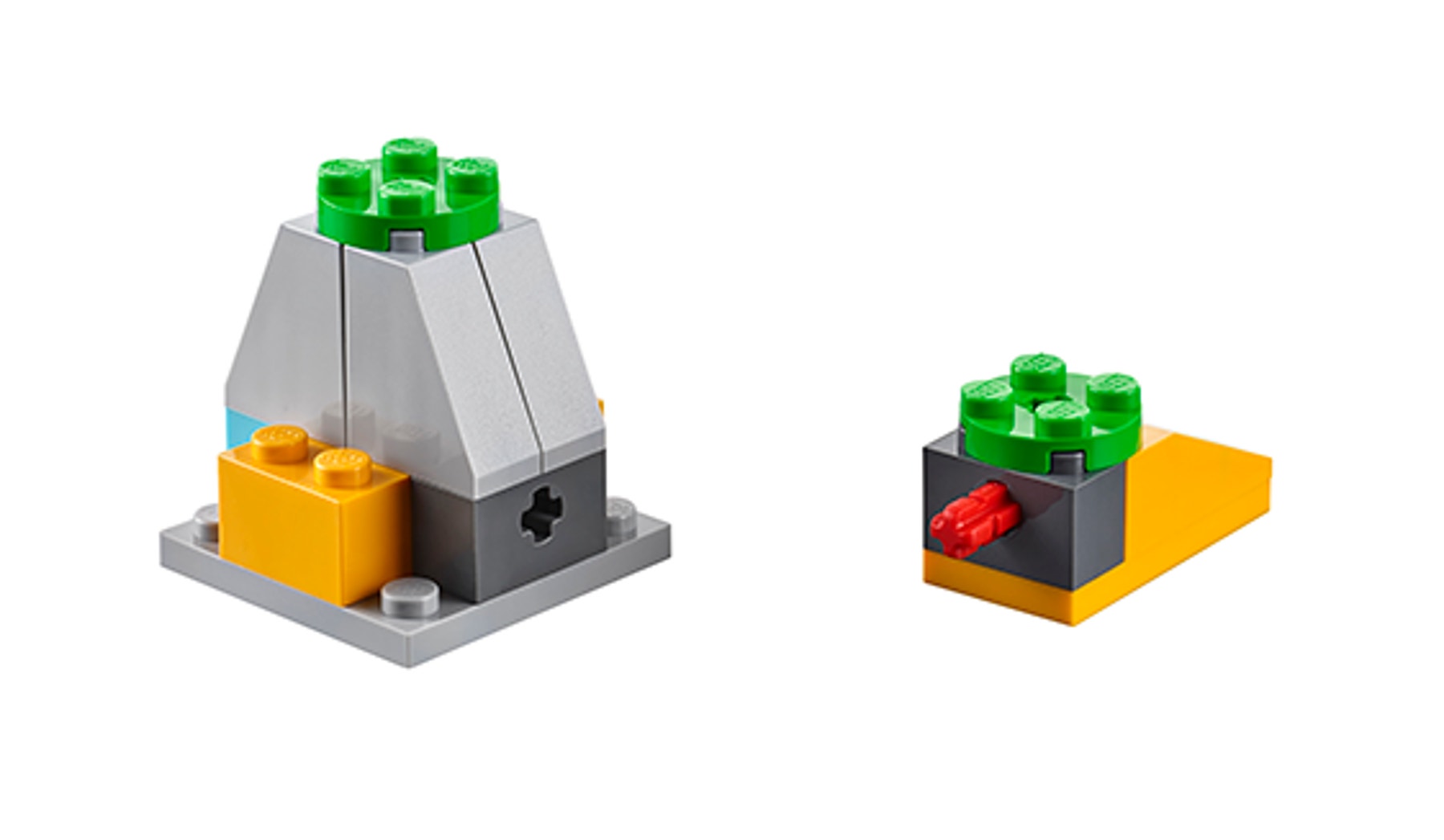Moon Base
Design a solution for a robot that would assemble a base on the moon.

1. Preparation
(15-30 Minutes)
• Read the project and the relevant Teacher Assistant material.
• Define how you would like to introduce this project. You can use the video provided with the project or use your own material.
• Determine the end result of this project. For example, define the parameters of your pupils’ presentations and the specific elements that they should include in their documents.
2. Explore phase
(10-45 Minutes)

The moon is the natural satellite of the earth and the closest place in space that we can go to. Establishing a base on the moon, on Mars or on another planet is a quest for humanity. As humans have already been to the moon, some challenges have known solutions. Other challenges would have to be solved before we can reach this goal. For example, our ability to move objects around in space is definitely one of these challenges.
Rockets are used to send both people and materials into space. To ease astronauts’ tasks in space, robots of various functions have been developed. For example, robots can be programmed to move on their own or to grab objects. Designing robots for moon usage starts on Earth, testing behaviours and adjusting designs before sending the robots into space.
Questions for discussion
- How can things be sent to the moon?
Things can be sent to the moon or to other places using rockets. - How could things land on the moon?
Many methods, such as parachutes, balloons and rockets have been invented in order to safely land packages. The moon’s atmosphere is very thin, so parachutes are not a good solution. Rockets have traditionally been used. - What is a good way to create and build a base on the moon?
Robots are often used for tasks that are too dangerous for humans to execute.
3. Create and Test phase
(40-60 Minutes)
Build and program
The pupils will build a robot that can drive and turn, and then they will program it to move on a surface.
The pupils can collect the small modules or build their own items to collect.
This program will enable your pupils to understand the behaviour of the robot. Allow some time for exploration and tinkering as your pupils become familiar with the robot’s movements.
To control the robot’s movement, it is important to understand the relationship between motor power and time. For example, if the time stays the same, the robot will go farther if the power level is set to 10 instead of 4.

Some elements pupils should pay attention to when building this model:
• The front tyres are bigger than the back tyre
• The wire of the motor must not interfere with the mechanism
• The tyres are correctly assembled on their hub
Team Building option
If you have extra devices, you can reduce the building time for this model by having each pupil build a part of their team’s robot:
•Pupil A can build from step 1 to 23
•Pupil B can build from step 24 to 41
Plan and try a solution:
• Define the path that your robot should follow in order to reach the first Moon Base module.
• Program your robot to move to the first module.
Try and modify your solution:
• Plan the path that your robot should take in order to reach the first and second Moon Base modules.
• Plan the path that your robot should take in order to reach its final location.
• Program your robot to follow these plans.

4. Share phase
(45+ Minutes)
The pupils should take some time to compile the information that they have collected throughout this project.
Depending on which skill(s) you would like to focus on, you might ask each team or pupil for one or more of the following:
• A sketch of their strategy (Decomposition)
• A video of their robot collecting the moon modules (Evaluation)
• A video of them explaining their solution (Abstraction)
• A screen capture of their programming string (Algorithmic Thinking)
• An explanation of their program (Algorithmic Thinking)
• Pictures and explanations of some of the tests that they carried out during the project (Evaluation)
Organise a session in which each team can present a demonstration of their solution(s).
5. Differentiation
This project can be made more challenging by adding one or more of the following requirements:
• Use more than two modules
• The trajectory must be completed within one minute
• The robot can only turn 90 degrees right during the trajectory
The following maths-related problems could be formulated:
• Two of the modules have landed perfectly on the moon. The other two modules have landed in a line that is parallel to the previous two. Demonstrate where these modules could have landed and program the robot to pick up the modules.
• Two modules have landed at a distance of 20cm of each other. The other two modules have landed so that the four modules in total create a rectangle with a perimeter that is smaller than 60 cm. Demonstrate where these modules could have landed and program the robot to pick them up.
• The four modules need to be picked up by two different robots, but they have to arrive at the base at the same time.
• Have the pupils build their own modules and create their own mission about building a base on the moon.
Teacher Support
Pupils will:
Explore why we would set up a base on the moon and how we could do it
Create and program a robot that can move on the surface of the moon
Test their program by building the moon base at a specific location
Share their program and ideas for how to succeed in this mission
LEGO® Education WeDo 2.0 Core Set
WeDo 2.0 Software or Programming App